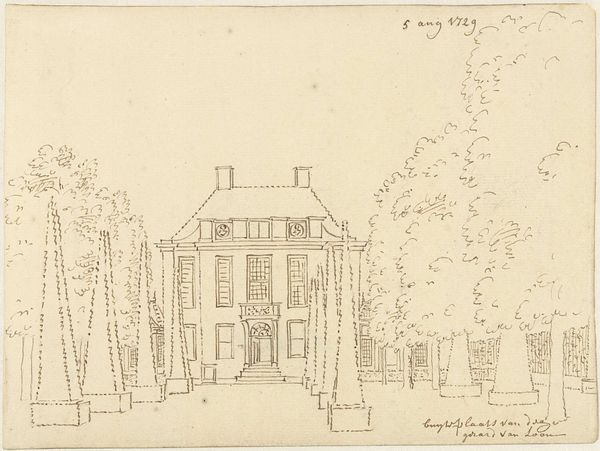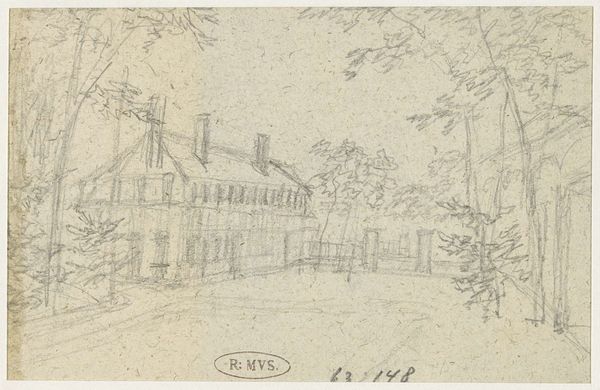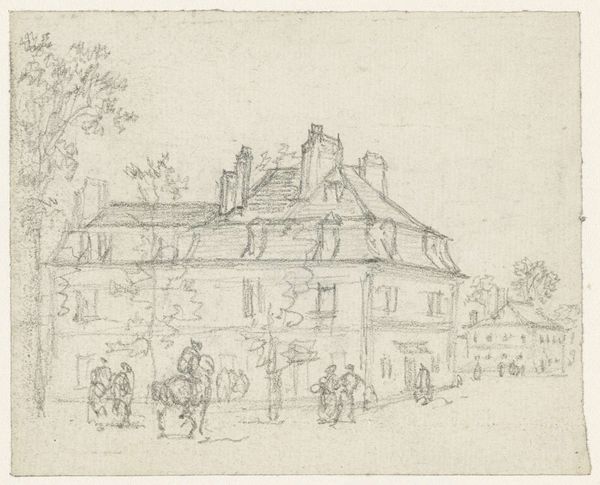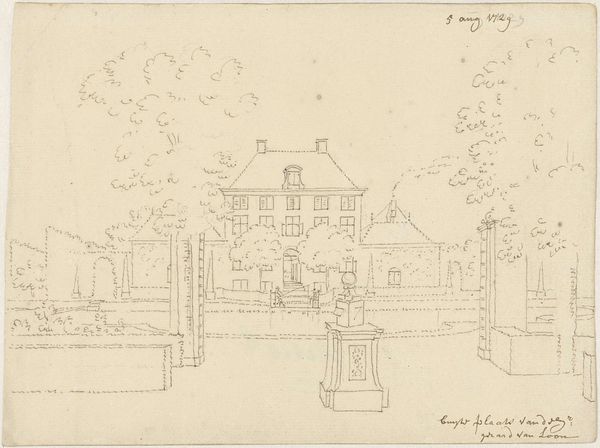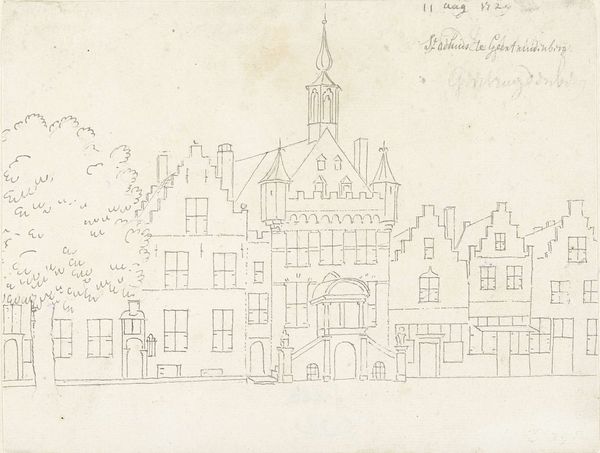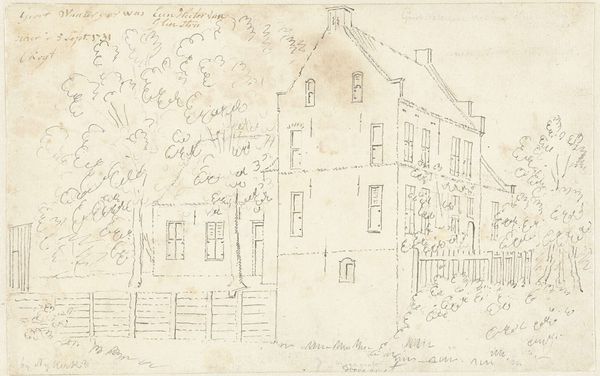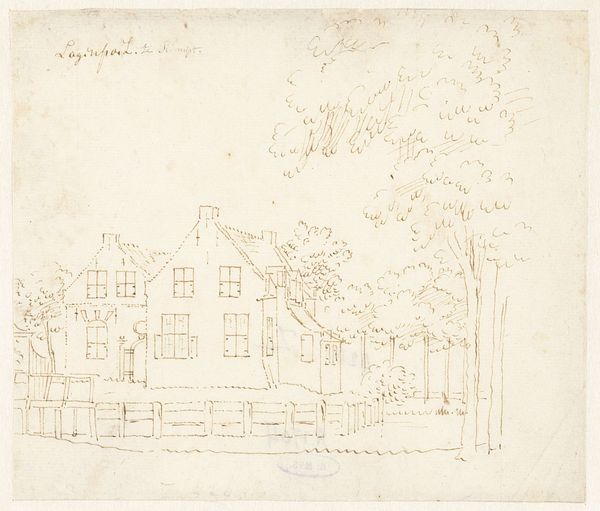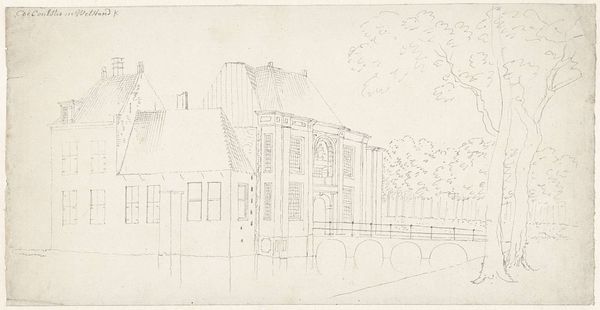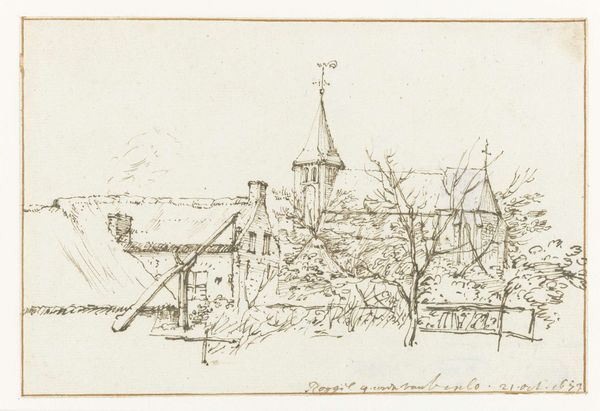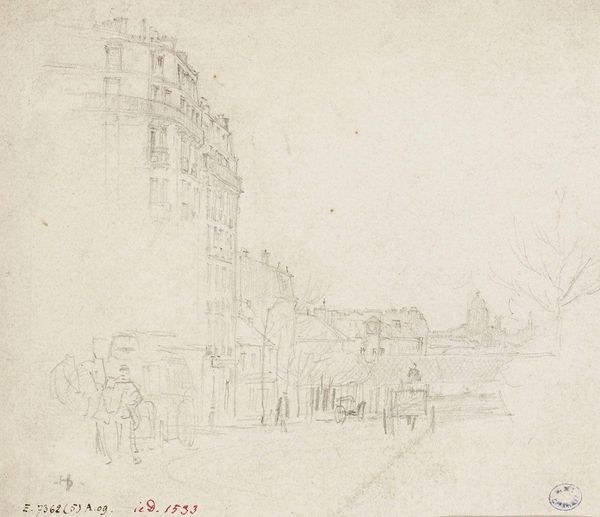
drawing, paper, ink, pen
#
drawing
#
aged paper
#
baroque
#
dutch-golden-age
#
old engraving style
#
hand drawn type
#
landscape
#
paper
#
personal sketchbook
#
ink
#
hand-drawn typeface
#
ink drawing experimentation
#
pen-ink sketch
#
line
#
pen work
#
sketchbook drawing
#
pen
#
cityscape
#
sketchbook art
Dimensions: height 164 mm, width 220 mm
Copyright: Rijks Museum: Open Domain
Curator: This drawing by Cornelis Pronk, made around 1730, depicts Het Kasteel Molencaten bij Hattem. The artwork is rendered in pen and ink on paper. What strikes you first about it? Editor: It's incredibly delicate, almost ephemeral. The lightness of the lines and the faded quality of the paper give it a sense of something fleeting, like a memory. Curator: That's a keen observation. Pronk was a master draughtsman. His detailed sketches, like this one, were often commissioned to document topographical views of estates and buildings across the Dutch Republic. Think of him almost as a recorder of a specific cultural moment. He captures not just the physical structure, but also aspects of social life through this setting. Editor: So, this wasn't just an artistic exercise, but also served a very practical, perhaps even political, purpose. Who was the intended audience, and what kind of power did they wield that necessitated such detailed documentation? It almost reads like architectural planning meets social documentation. Curator: Precisely. The elite classes commissioned these views. Patronage connected to networks of power is inherent in the image itself. The drawing emphasizes precise lines and meticulous detail in the architectural elements, which were enabled through developments of drawing and etching tools. The quality of the paper also speaks to luxury. Editor: It's interesting how the delicate style seems at odds with the socio-economic realities it hints at. A subtle tension plays between the airy presentation of the work, and the weighty implications surrounding the wealth that supports its existence. There's a story here about the very fabric of 18th-century Dutch society. Curator: Exactly. Examining Pronk’s practice allows us to reflect on artistic production as work. And through material analysis of the paper, inks and other media, we can unpack a great deal of its contemporary market dynamics. Editor: Seeing it that way truly enhances how I engage with the image. It goes beyond a mere landscape and becomes a point of entry into social and historical contexts that speak to issues of class, labour and identity. Thank you for broadening my perspective. Curator: My pleasure, it enriches my viewing of the artwork as well.
Comments
No comments
Be the first to comment and join the conversation on the ultimate creative platform.
